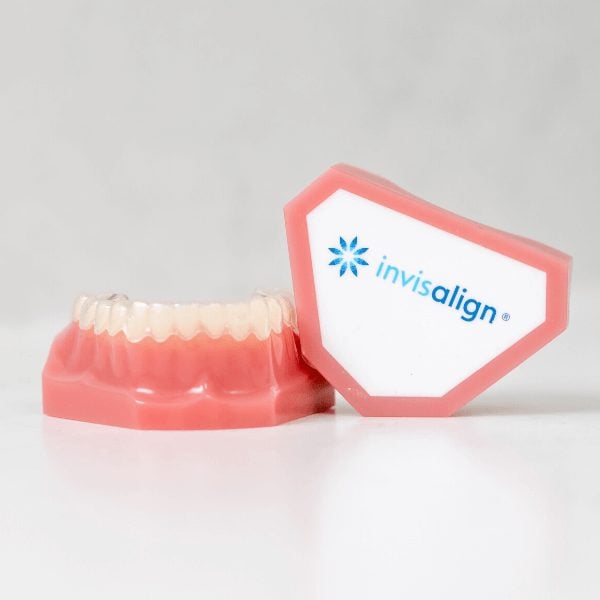The 5 Stages of Tooth Decay: How to Protect Your Smile at Every Stage
What is Tooth Decay?
Tooth decay, also known as dental caries or cavities, is a dental condition characterised by the destruction of the tooth structure. It occurs when acids produced by bacteria in plaque erode the outer layer of your tooth, known as enamel. If left untreated, decay can progress to deeper layers of the tooth, leading to pain, infection, and tooth loss.
The Causes of Tooth Decay
Tooth decay is primarily caused by poor oral hygiene and a diet high in sugar and carbohydrates. When you consume sugary or starchy foods, the bacteria in your mouth feed on the leftover particles and produce acids as a byproduct. These acids attack the enamel, weakening it and eventually causing cavities.
Other factors that can contribute to tooth decay include:
- Lack of fluoride: Fluoride is a mineral that helps strengthen tooth enamel and prevent decay. A lack of fluoride can make your teeth more susceptible to cavities.
- Dry mouth: Saliva plays a crucial role in rinsing away food particles and neutralising acids in the mouth. A dry mouth can increase the risk of tooth decay.
- Acidic foods and drinks: Consuming acidic foods and beverages can erode the enamel and make your teeth more vulnerable to decay.
- Dental erosion: Erosion occurs when the enamel is worn away by factors such as acidic foods, tooth grinding, or acid reflux.
The Role of Plaque in Tooth Decay
Plaque is a sticky film that forms on the teeth and contains bacteria that feed on sugars from the foods you eat. As the bacteria metabolise these sugars, they produce acids that attack the enamel, leading to demineralisation. Over time, the repeated acid attacks can weaken the enamel and create cavities.
Regular brushing and flossing are essential for removing plaque and preventing tooth decay. If plaque is not removed, it can harden into tartar, which can only be removed by a dental professional.
2. The Stages of Tooth Decay
Tooth decay progresses through several stages, each with its own characteristics and treatment options. Understanding these stages can help you identify decay early and seek appropriate dental care. Let’s explore each stage in detail.
Stage 1: Enamel Lesion
The first stage of tooth decay is the formation of a small brown or white mark, known as a lesion, on the enamel. These lesions are caused by the demineralisation of the enamel due to the acids produced by bacteria in plaque.
At this stage, the decay is still reversible, and there are no visible symptoms or pain. Regular dental check-ups are crucial for detecting these early lesions and preventing further decay. For patients with enamel lesions, we would generally recommend fluoride treatments or dental sealants to help remineralise the enamel and strengthen the tooth.
Stage 2: Enamel Decay
If the enamel lesion is left untreated, it can progress to the second stage, where the decay reaches the deeper layers of the enamel. At this point, the decay is visible on X-rays, and you may start experiencing sensitivity or pain when consuming hot, cold, or sweet foods.
To treat enamel decay in patients, we will remove the decayed portion of the tooth and fill it with a dental filling. The filling material we use is generally either tooth-coloured composite resin or amalgam, depending on your needs and preferences.
Stage 3: Dentine Decay
If enamel decay is left untreated, the decay can progress to the dentine, which is the softer layer beneath the enamel. This type of decay can spread quickly due to the porous nature of dentine, and you may experience increased tooth sensitivity, especially to hot and cold stimuli.
Treating dentine decay typically requires removing the decayed portion of the tooth and placing a filling. In some cases, we might recommend a dental crown to restore your tooth’s strength and protect it from further damage.
Stage 4: Pulp Decay
When decay reaches the pulp, which contains the tooth’s nerves and blood vessels, it can cause severe pain and inflammation. For patients with pulp decay, we will recommend root canal treatment to remove the infected pulp and save the tooth.
During a root canal procedure, we will remove the infected pulp, clean the root canals, and seal them with a biocompatible material. Afterward, we will place a dental crown on the tooth to provide strength and protection.
Stage 5: Formation of an Abscess
If tooth decay is left untreated, it can lead to the formation of an abscess, which is a pocket of pus that forms at the root of the tooth. Abscesses are often accompanied by severe pain, swelling, and an unpleasant taste in the mouth.
Treating an abscess usually involves draining the pus and removing the infected tissue. In some cases, we may recommend that the tooth be extracted if the infection is severe or the tooth cannot be saved.
3. Treatment Options for Tooth Decay
The treatment options for tooth decay depend on the stage of decay and the extent of damage to the tooth. Early-stage decay can often be treated with dental fillings, while more advanced decay may require dental crowns or root canal treatment. In some cases, tooth extraction may be necessary.
Fillings
Dental fillings are the most common treatment for cavities. During a filling procedure, your dentist will remove the decayed portion of the tooth and fill the space with a suitable material, such as composite resin or amalgam. Fillings restore the tooth’s structure and prevent further decay.
Composite resin fillings are tooth-coloured and blend in with your natural teeth, making them a popular choice for visible areas. Amalgam fillings, made of a mixture of metals, are durable and more suitable for molars and back teeth.
Dental Crowns
Dental crowns are used when a significant portion of the tooth is decayed or damaged. A crown is a custom-made cap that covers the entire tooth, restoring its shape, size, and strength. Crowns can be made from various materials, including porcelain, metal, or a combination of both.
To place a dental crown, we will first remove the decayed portion of the tooth and reshape it to accommodate the crown. The crown is then permanently cemented onto the tooth, providing long-lasting protection and functionality.
Root Canal Treatment
Root canal treatment, also known as endodontic treatment, is performed when the decay reaches the pulp of the tooth. The procedure involves removing the infected pulp, cleaning the root canals, and sealing them to prevent reinfection.
After a root canal, the tooth may become weaker and more prone to fracture. To strengthen and protect the tooth, a dental crown is usually placed on top. Root canal treatment allows you to save an infected tooth and avoid extraction.
Tooth Extraction
In severe cases of tooth decay, when the tooth cannot be saved or poses a risk to your oral health, extraction may be necessary. Tooth extraction involves removing the decayed tooth from its socket in the jawbone. After extraction, your dentist will discuss tooth replacement options, such as dental implants or bridges, to restore your smile and oral function.
4. Preventing Tooth Decay
Preventing tooth decay is always better than treating it. By following good oral hygiene practices and making healthy lifestyle choices, you can significantly reduce your risk of tooth decay. Here are some preventive measures to consider:
Practising Good Oral Hygiene
Regular brushing and flossing are essential for removing plaque and preventing tooth decay. Brush your teeth at least twice a day with fluoride toothpaste, and floss once a day to clean between the teeth and along the gumline. Consider using an antimicrobial mouthwash to further reduce bacteria in the mouth.
Limiting Sugar and Starch Intake
Your diet plays a significant role in your oral health. Foods and beverages high in sugar and carbohydrates provide an ideal environment for bacteria to thrive, leading to tooth decay. Limiting your intake of sugary snacks, soft drinks, and processed foods can help reduce the risk of cavities. Drinking water throughout the day can also help rinse away food particles and neutralise acids in the mouth.
Fluoride Treatment
Fluoride is a mineral that helps strengthen tooth enamel and protect against decay. Many toothpaste brands contain fluoride, but your dentist may recommend additional fluoride treatments, such as fluoride varnish or gels, to provide extra protection for your teeth.
Regular Dental Check-ups
Regular dental check-ups are crucial for early detection and treatment of tooth decay. Your dentist can identify early signs of decay, remove plaque and tartar buildup, and provide preventive treatments like dental sealants or fluoride applications. We recommend visiting your dentist at least twice a year to maintain optimal oral health.
Prevention is always better than cure
Remember, prevention is always better than cure. By practising good oral hygiene, maintaining a healthy diet, and seeking regular dental care, you can protect your teeth and enjoy a lifetime of healthy smiles.
If you do suspect tooth decay, it’s important to see a dentist right away. The sooner you seek treatment, the better your chances of saving the tooth and preventing further complications.
If you are experiencing any of the symptoms mentioned above, give us a call on 03 9593 1811 to book a check-up at our Brighton dental clinic. Our friendly dental professionals will help you diagnose any issues and provide the necessary treatment and guidance to ensure your oral health remains in excellent condition.
Disclaimer: The material posted is for informational purposes only and is not intended to substitute for professional medical advice, diagnosis or treatment. Results vary with each patient. Any dental procedure carries risks and benefits. If you have any specific questions about any dental and/or medical matter, you should consult your dentist, physician or other professional healthcare providers.
Services we mentioned:

Cosmetic Dentistry

Invisalign

Dental Veneers
Related Articles
What is All on 4 Dental Implants? What You Need to Know
Discover the cost of Invisalign in Melbourne with our comprehensive guide. From pricing & payment options to finding the perfect Invisalign dentist.
Breaking Down the Cost of Veneers in Melbourne
Discover the cost of Invisalign in Melbourne with our comprehensive guide. From pricing & payment options to finding the perfect Invisalign dentist.










